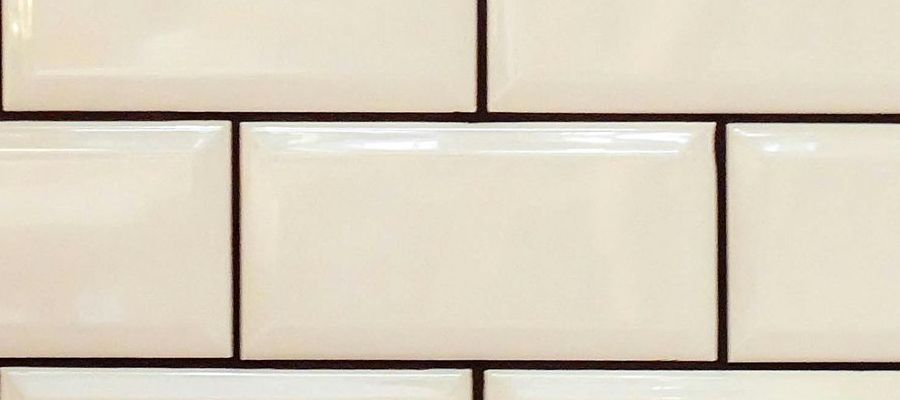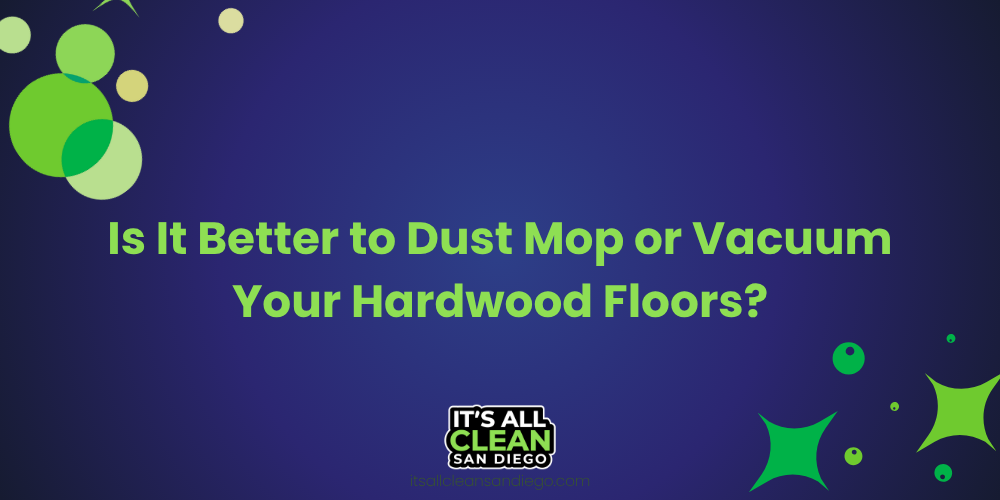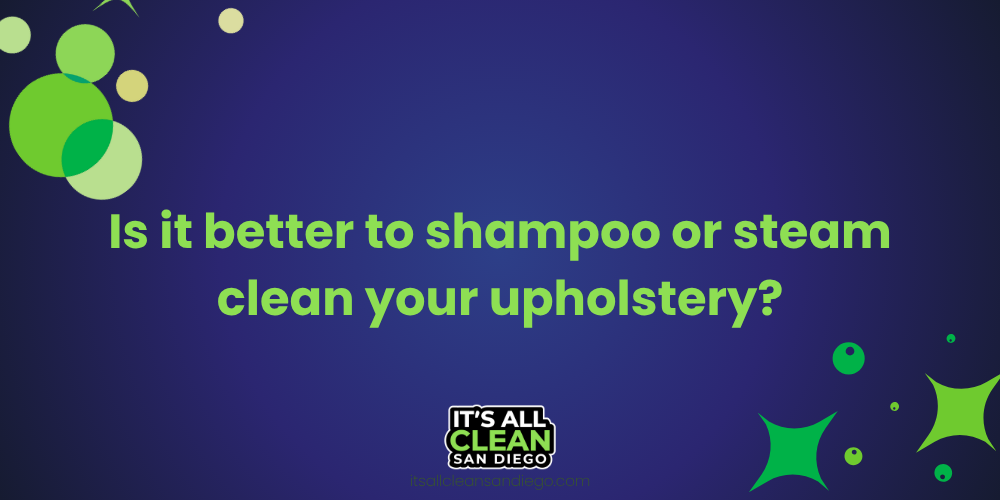San Diego, CA
Tiles are a popular choice for floors, backsplashes, and bathrooms due to their durability, variety, and stylish appeal. Whether in homes or commercial spaces, tile surfaces offer aesthetic and functional benefits. But not all tiles are created equal—each type of tile requires its own cleaning method to maintain its look and longevity.
Using the wrong cleaning solution or technique can lead to discoloration, damage, or grime buildup over time. In this guide, we’ll break down the most common types of tile and show you exactly how to clean them properly, so you can keep your surfaces spotless and extend their life.

1. Ceramic Tile
Overview:
Ceramic tile is made from natural clay that’s kiln-fired and often finished with a durable glaze. It’s one of the most widely used types of tile for floors, walls, and backsplashes.
Cleaning Tips:
- Routine Cleaning: Sweep or vacuum regularly to prevent dirt from scratching the glaze.
- Deep Cleaning: Use a mixture of warm water and a few drops of mild dish soap. Wipe with a microfiber mop or cloth.
- Avoid: Acidic or abrasive cleaners—they can damage the glazed surface or grout.
- Grout Maintenance: Use a pH-neutral grout cleaner and soft-bristle brush for periodic grout cleaning.
Pro Tip:
Even though ceramic tiles are durable, the grout lines between them are porous. Consider sealing your grout lines every 6 to 12 months for easier maintenance.
2. Porcelain Tile
Overview:
Porcelain tile is a subtype of ceramic tile but is denser, more water-resistant, and better suited for high-traffic areas or bathrooms.
Cleaning Tips:
- Routine Cleaning: Sweep or vacuum to remove loose debris.
- Deep Cleaning: Use a porcelain-safe cleaner or a mix of vinegar and warm water. Mop with a soft mop and rinse thoroughly.
- Stain Removal: For stubborn stains, use baking soda paste (baking soda + water) applied gently with a non-abrasive sponge.
Caution:
Although more stain-resistant than ceramic, porcelain still requires attention to prevent residue buildup, especially on matte finishes.
3. Natural Stone Tile (Marble, Granite, Slate, Travertine)
Overview:
Natural stone tiles offer elegance and unique patterns, but they are porous and more sensitive to chemicals.
Cleaning Tips:
- Routine Cleaning: Use a dry mop or soft vacuum to remove debris.
- Deep Cleaning: Use only a stone-safe pH-neutral cleaner. Avoid vinegar, lemon juice, or anything acidic—they can etch or dull the surface.
- Sealing: Natural stone tiles need to be sealed regularly (every 6–12 months) to prevent staining and moisture penetration.
- Spot Cleaning: Clean spills immediately to prevent staining.
Important:
Never use bleach or ammonia on natural stone—it can cause permanent damage.
4. Glass Tile
Overview:
Glass tiles are popular for backsplashes and decorative features. They’re non-porous and highly resistant to staining, but can scratch easily.
Cleaning Tips:
- Routine Cleaning: Wipe with a damp microfiber cloth and glass cleaner.
- Deep Cleaning: Use a mix of water and vinegar or a mild glass-safe detergent.
- Avoid: Abrasive pads, scouring powders, or brushes that could scratch the surface.
- Grout Cleaning: Use a non-acidic grout cleaner and a soft-bristle brush.
Best Practice:
Dry glass tile after cleaning to avoid water spots and streaks, especially in bathrooms or kitchens.
5. Cement Tile (Encaustic Tile)
Overview:
Cement tiles are handcrafted and have a matte, rustic finish. They’re highly absorbent and require careful maintenance.
Cleaning Tips:
- Routine Cleaning: Dry sweep or use a soft mop regularly.
- Deep Cleaning: Use only pH-neutral, cement-safe cleaners. Avoid soaking the tile with too much water.
- Sealing: Cement tiles must be sealed during installation and resealed as needed to avoid staining.
- Avoid: Acidic or oil-based products, which can stain or damage the tile permanently.
Maintenance Tip:
Blot spills immediately—cement tile is incredibly porous and prone to permanent staining if not properly sealed.
6. Quarry Tile
Overview:
Quarry tiles are unglazed, hard-fired ceramic tiles used mostly in commercial kitchens and outdoor areas due to their durability.
Cleaning Tips:
- Routine Cleaning: Sweep daily to remove grit and prevent scratches.
- Deep Cleaning: Use a commercial-grade degreaser or alkaline cleaner diluted in water. Mop and rinse thoroughly.
- Avoid: Oil- or wax-based products that can create a slippery film.
- Sealing: May require sealing depending on the finish and location (especially in kitchens or high-moisture environments).
7. Terracotta Tile
Overview:
Terracotta tiles offer a warm, earthy look but are very porous and require ongoing care to prevent water and stain absorption.
Cleaning Tips:
- Routine Cleaning: Dust or vacuum frequently to prevent scratches.
- Deep Cleaning: Use a terracotta-safe, pH-neutral cleaner with minimal water.
- Sealing: Regular sealing is critical to protect the tile from stains, especially in high-traffic or moisture-prone areas.
- Avoid: Harsh chemicals and too much water—terracotta absorbs liquids quickly.
8. Vinyl or Luxury Vinyl Tile (LVT)
Overview:
Though not technically a traditional tile, vinyl and LVT are popular for tile-look flooring that is waterproof and easy to maintain.
Cleaning Tips:
- Routine Cleaning: Sweep or vacuum regularly.
- Deep Cleaning: Mop with warm water and a gentle floor cleaner. Avoid saturating the floor with water.
- Avoid: Abrasive scrubbers or wax-based products.
Grout Cleaning: Often Overlooked, Always Important
No matter the type of tile, dirty grout can ruin the look of your floor or backsplash. Grout is porous and quickly absorbs spills, grease, and grime.
Best Grout Cleaning Tips:
- Use a pH-neutral cleaner or a baking soda paste with a soft brush.
- Avoid bleach—it can erode grout over time and cause discoloration.
- Consider professional tile and grout sealing after cleaning to prolong the results.
Why Professional Tile Cleaning Makes a Difference
Even with regular maintenance, tile surfaces can accumulate:
- Soap scum
- Mold and mildew
- Embedded dirt in textured tiles
- Grease in kitchens
- Hard water stains in bathrooms
Professional tile and grout cleaning goes beyond surface wiping. At It’s All Clean San Diego, we use commercial-grade steam cleaners, powerful scrubbers, and eco-friendly products to restore tile surfaces to like-new condition without damaging their finish.
Whether it’s a delicate marble floor or a high-traffic kitchen tile, our team tailors the cleaning method to your tile type to preserve its beauty and durability.
Final Thoughts: Clean Tile Is Healthy, Beautiful Tile
Understanding your tile type is the first step to proper care. From natural stone and porcelain to glass and cement, each surface has unique characteristics—and cleaning needs. By tailoring your maintenance routine, you not only protect your tile but also extend its life, reduce allergens, and enhance the overall appearance of your home or business.
If you’re unsure how to clean your tile safely—or if your surfaces have lost their luster—it might be time for professional help.
Trust It’s All Clean San Diego for Expert Tile and Grout Cleaning
Don’t risk damaging your beautiful tile with the wrong products or techniques. At It’s All Clean San Diego, we provide professional tile and grout cleaning services that restore shine, remove deep-set stains, and improve hygiene in your space.
Contact us today to schedule your tile cleaning service and discover the difference true professionalism makes. It’s All Clean San Diego – Your trusted experts in household and commercial tile care.
- All rights reserved -
It's All Clean San Diego © 2021
Pick a service, and we’ll be there.
Your go-to clean, green, full-service team.
Got a mess? We’ve got you covered. At It’s All Clean San Diego, we have professional commercial cleaning and residential house cleaning services for every need.
Our family-owned, full-service professional floor cleaning company has served residential and commercial customers in San Diego for nearly 20 years.










